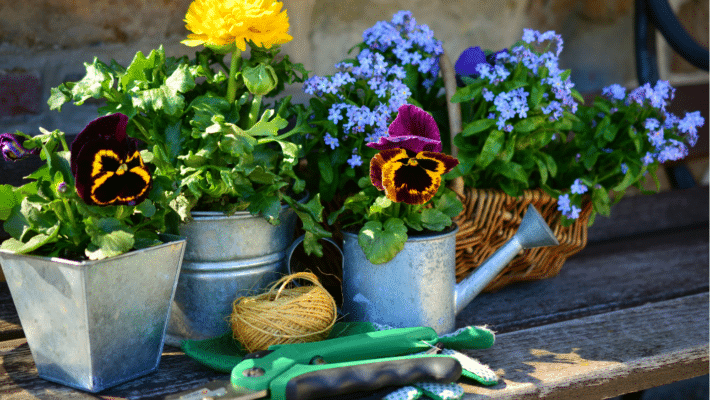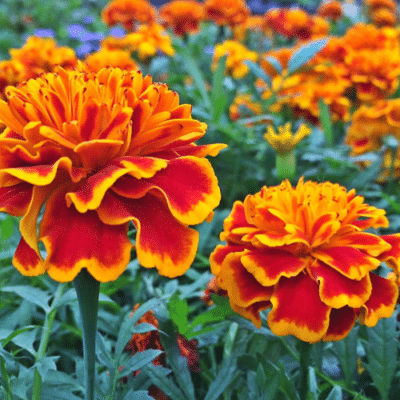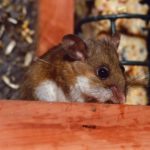
Spring Has Sprung: Gardening Tips to Keep your New England Home Pest-Free!
As the gardening and landscaping season kicks off in New England, enthusiastic homeowners are busy pulling weeds, spreading mulch, planting vibrant flowers, and shaping their yards. While you’re focused on enhancing your home’s curb appeal, it’s crucial to avoid common gardening mistakes that can invite unwanted pests. Here are essential tips to beautify your landscape while keeping your home protected from pests
Mulch
 Stop by a home improvement store or nursery and you’ll be greeted by a vast array of mulch bags in various hues, predominantly crafted from wood chips. Though it’s inexpensive and can be visually appealing on your property, it can also attract pests such as earwigs, roaches, carpenter ants, and termites. The latter duo in particular can wreak havoc on your home and cause thousands of dollars’ worth of damage to your home.
Stop by a home improvement store or nursery and you’ll be greeted by a vast array of mulch bags in various hues, predominantly crafted from wood chips. Though it’s inexpensive and can be visually appealing on your property, it can also attract pests such as earwigs, roaches, carpenter ants, and termites. The latter duo in particular can wreak havoc on your home and cause thousands of dollars’ worth of damage to your home.
If you love the look of mulch- don’t fret! Rubber mulch is a great alternative to wood mulch in appearance and weed control and is also a less inviting harborage for pests. That’s not all: rubber mulch is made from recycled tires, helping to keep some of the 290 million scrap tires Americans generate each year out of landfills.
Plant Proximity
Inspect any bush or shrub in your garden closely, and you’re bound to discover a few insects nestled among the foliage or darting along the stems. These plants not only offer sustenance and refuge to bugs but when positioned too near your home, they also serve as a natural pathway for pests to infiltrate your living space. To prevent the migration of outdoor critters indoors, ensure your plants are well-trimmed with ample space between their branches and your house. A general guideline is to maintain an 18-inch clearance. This principle also extends to trees, as overhanging branches near your roof can grant unwelcome wildlife like squirrels easy entry to your chimney or attic.
Pest-Repelling Plants
 Many people choose what to plant based off of appearance alone, but there are several ornamental flowers and herbs that also do their part in repelling insects.
Many people choose what to plant based off of appearance alone, but there are several ornamental flowers and herbs that also do their part in repelling insects.
- Marigolds: These fragrant blooms are known to repel mosquitoes, aphids, and even rabbits. Marigolds are easy to grow and can also be planted in a vegetable garden near tomato plants to help keep tomato hornworms away.
- Chrysanthemums: Repel roaches, ants, ticks, fleas, and many other pesky insects. Flying and crawling insects avoid mums due to a fatal ingredient called Pyrethrin, which is toxic to bugs but safe for animals.
- Geraniums: These brightly colored flowers are known to repel mosquitoes, leafhoppers, and Japanese beetles. They come in a variety of colors and last throughout the spring, summer and early fall.
- Rosemary: Repels mosquitoes and a variety of other insects that can prove harmful to your garden. Rosemary can be planted in containers or in the ground, can be used to season vegetables and meats, and can also be burned for a natural form of mosquito control.
- Lavender: Considered an effective deterrent for flies, fleas, mosquitoes and other unwanted insects. Lavender is also renowned for its calming properties and the versatility of its oil.
- Basil: This leafy green herb helps deter house flies and mosquitoes, and makes an excellent filler plant in your flower or vegetable garden. As an added bonus, it’s a tasty addition to many soups, salads, and chicken recipes.
It’s important to note that these plants do not repel all insects and will not eliminate insect activity entirely. You might also consider using a variety of plants that can attract carnivorous insects, such as ladybugs, which will feed on other garden pests.
Water Features and Wildlife Feeders

- Birdbaths should be maintained properly to prevent mosquito breeding. Change the water daily to disrupt the mosquito life cycle.
- Birdfeeders should be positioned away from your house to prevent attracting rodents. Use rodent-proof containers for storing birdseed and consider installing seed catchers to minimize spillage.
Modern Pest Solution
Even with the best preventive measures, pest issues can persist. That’s where Modern Pest Services comes in. Our HomeCare Green program offers comprehensive, eco-friendly protection against a wide range of pests, ensuring your peace of mind throughout the year. Additionally, our Mosquito and Tick Control program provides targeted treatments from May through September, helping you enjoy your outdoor spaces without the nuisance of biting insects.
For more information or to schedule a consultation, contact Modern Pest Services at 1-800-323-7378 or visit our website. Let’s make this gardening season both beautiful and pest-free!
